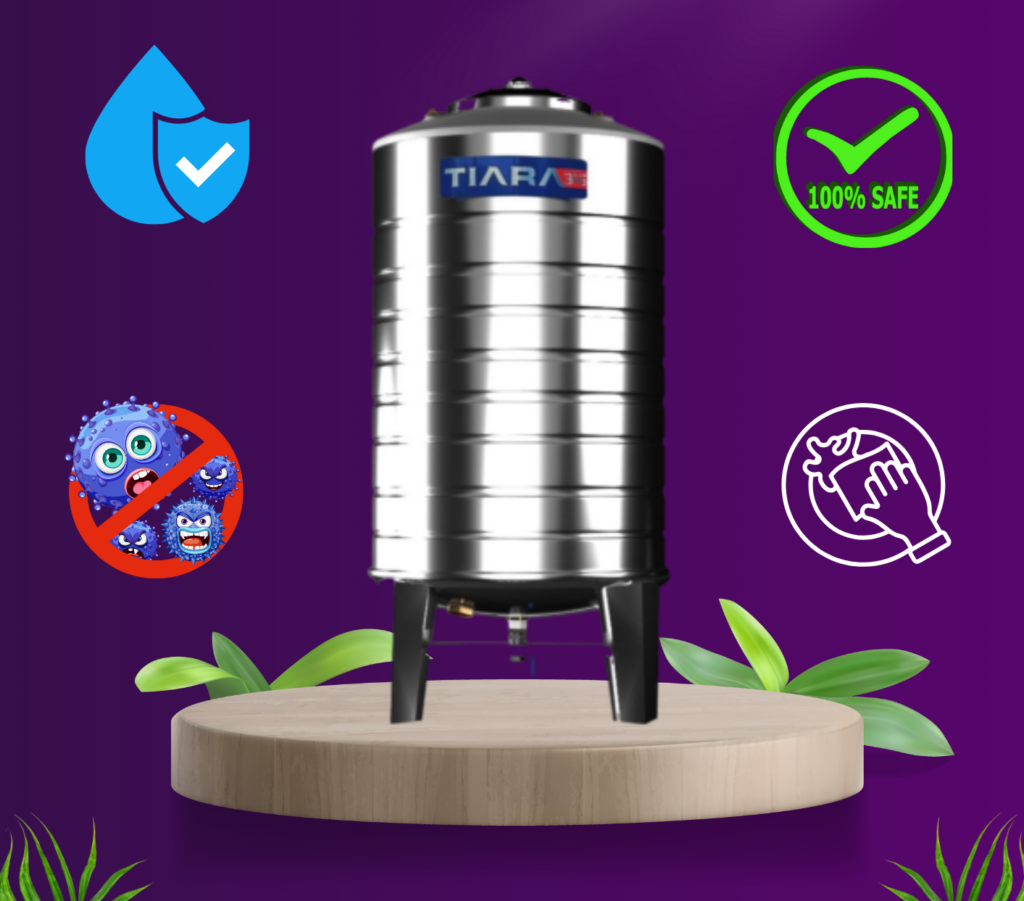
Water is essential to life, and ensuring that it is clean and safe for consumption is one of the most crucial steps in promoting public health. Waterborne diseases, which are caused by pathogens like bacteria, viruses, and parasites, are a leading cause of illness worldwide. These diseases can result from contaminated drinking water, and they are particularly prevalent in areas with inadequate sanitation or poor water storage practices. One of the most effective ways to reduce the risk of waterborne illnesses is to store and transport water in clean, durable, and non-reactive containers. Stainless steel tanks have emerged as a vital solution for safe water storage. Their unique properties help maintain water quality, minimize contamination risks, and ultimately reduce the incidence of waterborne diseases. Here’s how stainless steel tanks play a key role in safeguarding public health.
1. Non-Toxic and Corrosion-Resistant Material
Stainless steel is renowned for its resistance to corrosion, rust, and chemical reactions. Unlike other materials such as plastic or galvanized steel, stainless steel does not leach harmful chemicals or toxins into the water. Many other types of tanks can degrade over time, especially when exposed to harsh environmental conditions, leading to the release of harmful substances into stored water. Stainless steel, on the other hand, remains stable even in extreme temperatures and does not degrade easily.
The ability of stainless steel to prevent contamination from materials that may be present in other types of storage tanks is crucial for maintaining the purity of drinking water. By using stainless steel tanks, the risk of water contamination from tank materials is significantly reduced, making it a safer alternative for water storage, especially in areas where waterborne illnesses are a concern.
2. Prevents Bacterial Growth
Waterborne illnesses are often transmitted through bacteria, such as Escherichia coli (E. coli) and Salmonella. These pathogens can thrive in environments where water is stored improperly, especially in tanks that are difficult to clean or that promote biofilm formation. However, stainless steel tanks are much easier to clean and sanitize compared to other types of tanks like plastic or concrete. The smooth, non-porous surface of stainless steel prevents the accumulation of organic matter and algae that can provide a breeding ground for bacteria. Regular cleaning and maintenance of stainless steel tanks help ensure that harmful microorganisms do not proliferate, greatly reducing the risk of contamination.
3. Reduced Risk of Contamination from External Sources
Water can become contaminated in many ways—through contact with pollutants in the air, dust, or from external sources like animals, insects, or waste. Stainless steel tanks are typically sealed and come with tightly fitting lids or covers, minimizing the chances of contamination from these external sources. This airtight, secure storage also prevents animals from accessing the water and reduces the likelihood of pests, such as rodents or insects, carrying disease-causing pathogens into the water supply.
Additionally, stainless steel’s resistance to algae and mold growth is another significant benefit. Many tanks, especially those made of plastic, can develop biofilm and mold over time, which not only degrades the water quality but also contributes to the growth of harmful microorganisms. Stainless steel tanks, by contrast, are more resistant to these issues, providing a cleaner, safer environment for water storage.
4. Reduced Chemical Exposure
Some water storage materials, particularly certain plastics, can leach harmful chemicals into water over time, especially when exposed to sunlight or high temperatures. These chemicals, such as Bisphenol A (BPA), can pose serious health risks when consumed. Stainless steel, however, is a non-reactive material that does not leach harmful substances into the water.
For people who rely on stored water for drinking, cooking, or cleaning, using a stainless steel tank ensures that the water remains free of harmful chemicals that could potentially cause long-term health issues. By reducing exposure to these substances, stainless steel tanks provide a safer, healthier option for water storage.
Conclusion
Waterborne diseases remain a significant global health threat, particularly in areas with limited access to clean water and proper sanitation. Stainless steel tanks provide an effective, long-term solution to reduce the risks of water contamination and the spread of waterborne illnesses. With their corrosion resistance, ease of cleaning, and ability to prevent bacterial growth, stainless steel tanks are a vital investment for maintaining the safety and quality of stored water.


